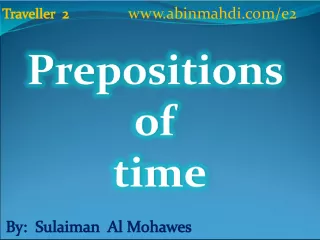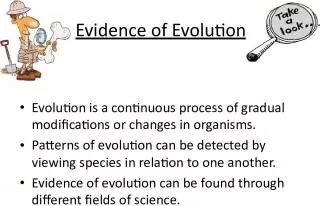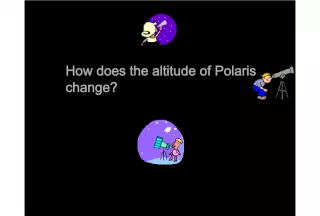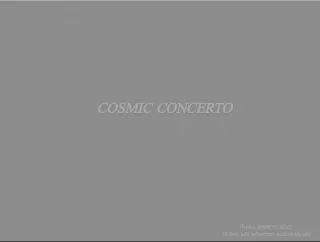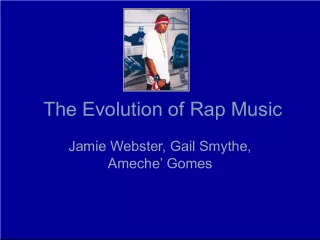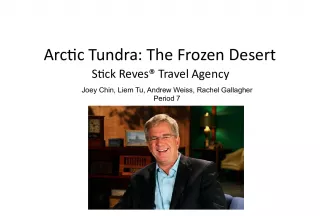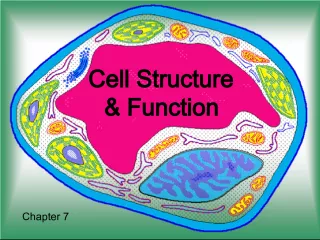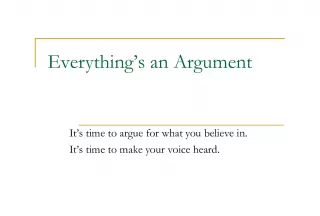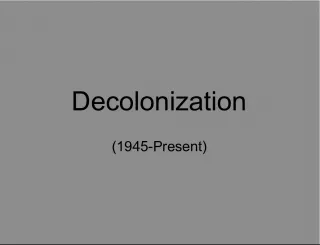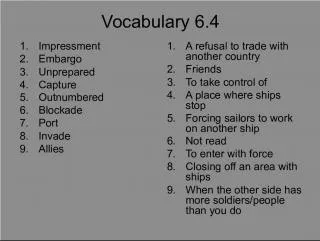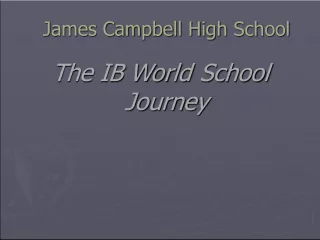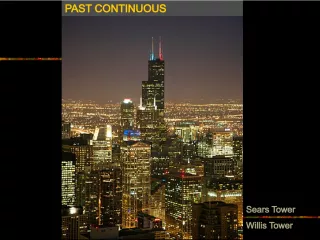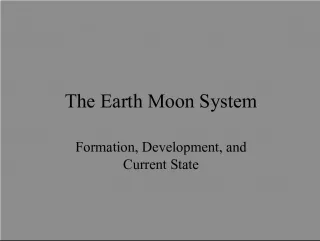A Journey Through Time:Exploring Fossils
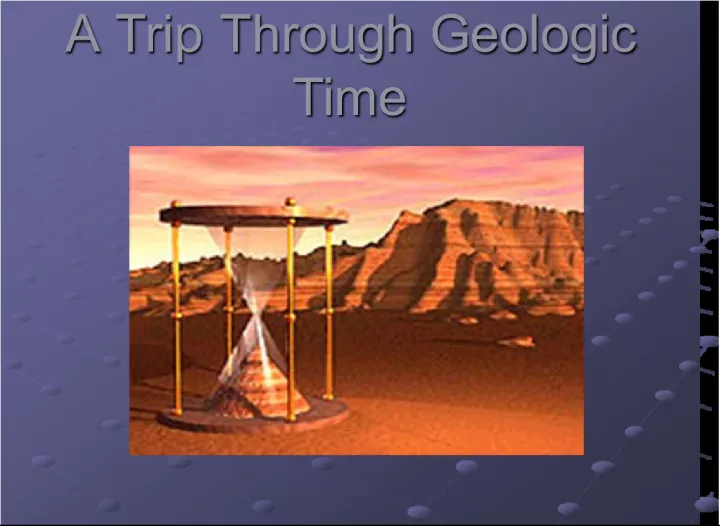

Discover the wonders of fossils as we travel through geologic time. Delve into the preserved remains and traces of life that reveal our planet's history with exciting revelations at every turn.
- Uploaded on | 2 Views
-
 majahansen
majahansen
About A Journey Through Time:Exploring Fossils
PowerPoint presentation about 'A Journey Through Time:Exploring Fossils'. This presentation describes the topic on Discover the wonders of fossils as we travel through geologic time. Delve into the preserved remains and traces of life that reveal our planet's history with exciting revelations at every turn.. The key topics included in this slideshow are . Download this presentation absolutely free.
Presentation Transcript
1. A Trip Through Geologic Time A Trip Through Geologic Time
2. Fossils Fossils Fossils are preserved remains or traces of living things. Fossils are preserved remains or traces of living things. Most fossils form when living things die and are buried by sediments. Most fossils form when living things die and are buried by sediments. The sediments slowly harden into rock and preserve the shape of the organisms. The sediments slowly harden into rock and preserve the shape of the organisms. Scientists who study fossils are paleontologists. Scientists who study fossils are paleontologists.
3. Fossils Fossils Fossils are usually found in sedimentary rocks. Fossils are usually found in sedimentary rocks. When an organism dies, its soft parts often decay quickly leaving only the hard parts to fossilize. When an organism dies, its soft parts often decay quickly leaving only the hard parts to fossilize. Ex. Bones, Shells, Teeth, or Seeds Ex. Bones, Shells, Teeth, or Seeds
4. Kinds of Fossils Kinds of Fossils Petrified Fossils : fossils in which minerals replace all or part of the organism. Ex: petrified wood Petrified Fossils : fossils in which minerals replace all or part of the organism. Ex: petrified wood When the object is buried by sediment, water rich in minerals seeps into the cells. After the water evaporates, hardened minerals are left behind. When the object is buried by sediment, water rich in minerals seeps into the cells. After the water evaporates, hardened minerals are left behind.
5. Kinds of Fossils Kinds of Fossils Molds and Casts Molds and Casts A mold is a hollow area the shape of an organism A mold is a hollow area the shape of an organism A cast is a copy of the shape of an organism. A cast is a copy of the shape of an organism.
6. Kinds of Fossils Kinds of Fossils Carbon Films : an extremely thin coating of carbon on rock that forms when materials that make up an organism become gases and escape leaving only carbon behind. Carbon Films : an extremely thin coating of carbon on rock that forms when materials that make up an organism become gases and escape leaving only carbon behind. Trace Fossils provide evidence of the activities of ancient organisms. Ex: footprints, animal trails, or animal burrows. Trace Fossils provide evidence of the activities of ancient organisms. Ex: footprints, animal trails, or animal burrows.
7. Kinds of Fossils Kinds of Fossils Preserved Remains are formed when an organism is preserved with little or no change. Preserved Remains are formed when an organism is preserved with little or no change. For example when organisms become preserved in tar, amber (tree sap), and freezing. For example when organisms become preserved in tar, amber (tree sap), and freezing.
8. Why Study Fossils? Why Study Fossils? Scientists study fossils to learn what past life forms were like. Scientists study fossils to learn what past life forms were like. Paleontologists classify organisms in the order in which they lived. Paleontologists classify organisms in the order in which they lived. All the information scientists have gathered is called the fossil record . All the information scientists have gathered is called the fossil record .
9. Fossil Record Fossil Record The fossil record provides evidence about the history of life on Earth. The fossil record provides evidence about the history of life on Earth. The fossil record also shows how different groups of organisms have changed over time. The fossil record also shows how different groups of organisms have changed over time. It also provides evidence to support the theory of evolution. It also provides evidence to support the theory of evolution.
10. Remember! Remember! A scientific theory is a well-tested concept that explains a wide range of observations. A scientific theory is a well-tested concept that explains a wide range of observations. The fossil record shows that millions of types of organisms have evolved. The fossil record shows that millions of types of organisms have evolved. However, many others became extinct. However, many others became extinct.
11. Finding the Age of Rocks Through Rock Dating Finding the Age of Rocks Through Rock Dating
12. Ages of Rocks Ages of Rocks The relative age of a rock is its age compared to other rocks. Use words like: older or younger The relative age of a rock is its age compared to other rocks. Use words like: older or younger The absolute age of a rock is the number of years since the rock was formed. The absolute age of a rock is the number of years since the rock was formed. Ex: 358-360 mya Ex: 358-360 mya
13. Rock Joke!! Rock Joke!! What does a rock want to be when it grows up? What does a rock want to be when it grows up? A Rock Star!! A Rock Star!!
14. The Position of Rock Layers The Position of Rock Layers It can be difficult to determine a rocks absolute age. So scientists use the law of superposition . It can be difficult to determine a rocks absolute age. So scientists use the law of superposition . According to the law of superposition , in horizontal sedimentary rock layers the oldest layer is at the bottom. Each higher layer is younger than the layers below it. According to the law of superposition , in horizontal sedimentary rock layers the oldest layer is at the bottom. Each higher layer is younger than the layers below it.
15. Rock Joke!! Rock Joke!! How do rocks wash their clothes? How do rocks wash their clothes? The Rock Cycle!! The Rock Cycle!!
16. Other Clues to Relative Age Other Clues to Relative Age Clues From Igneous Rock Clues From Igneous Rock Lava that cools at the surface is called an extrusion. Rock below an extrusion is always older. Lava that cools at the surface is called an extrusion. Rock below an extrusion is always older. Magma that cools beneath the surface is called an intrusion. An intrusion is always younger than the rock layers around and beneath it. Magma that cools beneath the surface is called an intrusion. An intrusion is always younger than the rock layers around and beneath it.
17. Other Clues to Relative Age Other Clues to Relative Age Faults (a break in the rock) are always younger than the rock it cuts through! Faults (a break in the rock) are always younger than the rock it cuts through! Unconformities : An unconformity is a gap in the geological record that can occur when erosion wears away rock layers and other rock layers form on top of the eroded surface. Unconformities : An unconformity is a gap in the geological record that can occur when erosion wears away rock layers and other rock layers form on top of the eroded surface.
18. Using Fossils to Date Rocks! Using Fossils to Date Rocks! Scientists use index fossils to match rock layers. Scientists use index fossils to match rock layers. An index fossil must be widely distributed and represent a type of organism that existed only briefly. An index fossil must be widely distributed and represent a type of organism that existed only briefly. They are useful because they tell the relative ages of the rock layers they are found in. They are useful because they tell the relative ages of the rock layers they are found in.
19. The Trilobite The Trilobite One example of an index fossil is a trilobite. One example of an index fossil is a trilobite. Trilobites were a group of hard-shelled animals whose bodies had three distinct parts. Trilobites were a group of hard-shelled animals whose bodies had three distinct parts. They evolved in shallow seas more than 500 million years ago. They evolved in shallow seas more than 500 million years ago.
